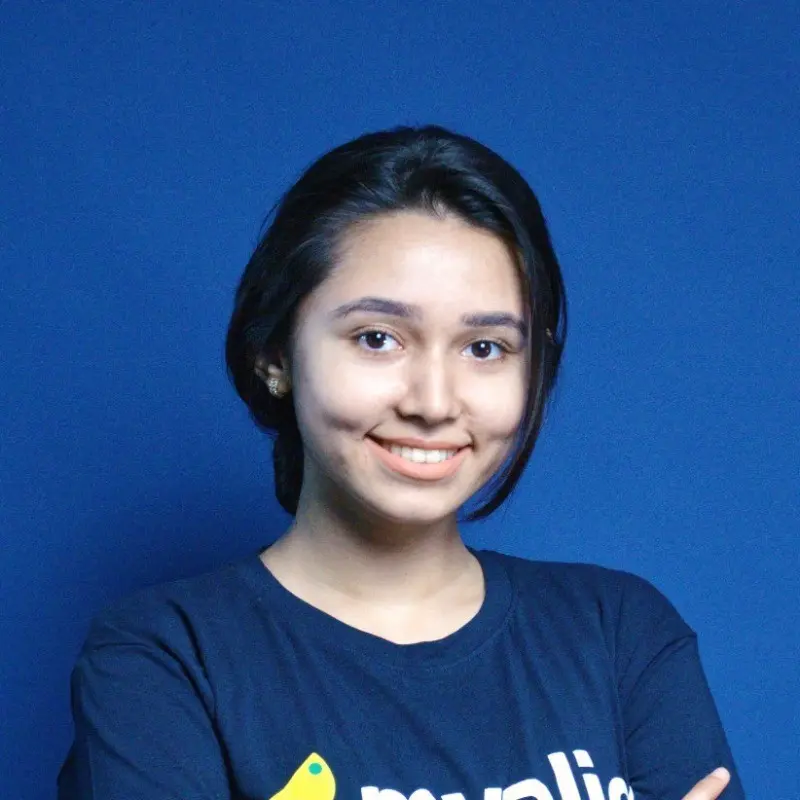There used to be a time when people considered Artificial Intelligence (AI) a buzzword in the marketing industry. Their perceptions about its influence were only up to ChatGPT’s content writing capabilities.
But time has changed. As new tools and capabilities are being launched every day, AI in all fields of marketing (yes, beyond plain content marketing) has become a necessity — just like keyword research’s necessity in blog writing!
AI has slowly yet strongly made its way through the tricky, technical world of paid marketing, too. How? Here’s a very common instance: if you've ever encountered an ad that seemed precisely tailored to your interests, it's likely the result of AI analyzing your behavior and predicting your preferences. In fact, 88% of marketers using AI have reported enhanced personalization across various channels.
For marketing professionals, AI has tons of benefits. It can automate repetitive tasks, optimize ad spend, and accelerate results. However, when you’re on the other end as a paid marketing client aka a business or startup owner, receiving services from a marketing professional, there might be a knowledge gap that will make you wonder: how is AI being used to manage your ads? What are its impacts?
And most importantly, what should you — as a paid marketing client — know about AI in advertising?
This guide is designed to help you answer all these questions. We'll explore:
- The impact of AI in advertising.
- Options for tools and software that use AI.
- How to utilize them to reap the benefits.
- Common pitfalls to avoid.
- A list of actionable insights one should be aware of as both a business and advertiser.
- Future trends.
By the end, you'll have a comprehensive understanding of how to harness AI's potential in your advertising efforts, ensuring they are both efficient and impactful.
Understanding AI in advertising
AI in advertising is all about data — collecting it, analyzing it, and using it to deliver better, more personalized ads at scale. If you’ve noticed that ads seem to “follow you” across platforms, or that certain brands seem to know exactly when to target you with an offer, that’s AI at work. But how does it actually do this?
Let’s break down the key AI-driven technologies that power modern advertising.
Machine learning in ad targeting
Think of machine learning as the brain behind AI-powered ads. It analyzes tons of historical data— from what people click on to how they interact with a website — to figure out who is most likely to engage with a certain ad.
For example, platforms like Google Ads and Meta Ads use machine learning to predict:
- Who is most likely to click, engage, or convert
- Which ad placements will get the best return on investment (ROI)
- When to increase or decrease bids automatically
Instead of advertisers having to manually tweak settings all day, AI does it in real-time, constantly refining its strategy based on new data and audience behavior.
Predictive analytics in marketing
Imagine knowing what your customers want before they do. That’s what predictive analytics aims to achieve. AI looks at past behavior, such as search history, purchase patterns, and website visits to predict future actions.
For businesses, this means:
- Better audience segmentation: AI identifies customers who are ready to buy vs. those just browsing.
- More precise retargeting: AI can re-engage users at the right moment with personalized ads.
- Higher conversion rates: ads reach people when they are most likely to take action.
Brands like Amazon and Netflix live and breathe predictive analytics—their AI-driven recommendation engines are proof of how powerful this technology can be.
Programmatic advertising and real-time bidding (RTB)
Gone are the days when advertisers had to manually buy ad space on different websites. AI now does this automatically through programmatic advertising.
Here’s how it works:
- AI analyzes user behavior in real-time
- It bids for ad space (in milliseconds) whenever a relevant user is detected
- If it wins the bid, the ad instantly appears on the website or app
This process, known as real-time bidding (RTB), happens in the blink of an eye and ensures that ads are placed where they have the highest chance of engagement.
Dynamic creative optimization (DCO)
Ever noticed how some ads change depending on what you’ve been browsing? That’s DCO in action.
Instead of running one static ad for everyone, AI-powered DCO tweaks:
- Headlines, images, and calls to action (CTAs) based on who’s seeing the ad
- Personalized product recommendations (e.g., an ad for shoes you viewed yesterday)
- Location-based offers (e.g., a discount at a nearby store)
This helps advertisers deliver highly relevant ads, increasing the chances of conversion without needing to manually create dozens of different versions.
Conversational AI and chatbots in marketing
AI-powered chatbots are changing how businesses interact with customers. Whether it’s answering FAQs, recommending products, or guiding users through a purchase, chatbots automate customer engagement and keep potential buyers engaged.
Brands using AI chatbots include:
- Sephora offering personalized beauty advice through AI-powered chat.
- Domino’s allowing customers to order pizza via AI chat.
- eCommerce stores using chatbots for instant customer service & lead generation
These bots operate 24/7, ensuring customers get responses without waiting on human agents.
AI-powered sentiment analysis
AI doesn’t just analyze clicks and purchases, it can also interpret human emotions. Through sentiment analysis, AI scans social media comments, product reviews, and customer feedback. Through this analysis, it identifies whether people feel positive, negative, or neutral about a brand or campaign. Advertisers use this data to tweak messaging, avoid backlash, and respond quickly to negative sentiment before it spirals into bad PR.
Knowing the tech behind AI-driven ads is just the beginning. Next, we’ll explore the top AI-powered advertising platforms and the criteria you can follow to choose the right one for your business needs.
AI-powered advertising platforms
AI is deeply embedded in today’s biggest advertising platforms. The capabilities that we just discussed above are helping businesses automate bidding, personalize ads, and optimize campaigns in real-time. Whether you’re running search, social, or display ads, AI is working behind the scenes to analyze data, predict user behavior, and maximize ad performance.
Here’s a breakdown of the top AI-powered ad platforms and how they use AI to improve results.
1. Google Ads
Google Ads has been integrating AI for years, refining its algorithms to help advertisers get better results with less manual effort. Some of its most powerful AI-driven features include:
- Smart Bidding – Uses AI to adjust bids automatically based on factors like device, location, time of day, and likelihood of conversion.
- Performance Max – A fully automated campaign type that runs across all Google properties (Search, Display, YouTube, Gmail, and Discover) using AI to allocate budget dynamically.
- Responsive Search Ads – AI tests multiple headlines and descriptions, learning which combinations drive the best results.
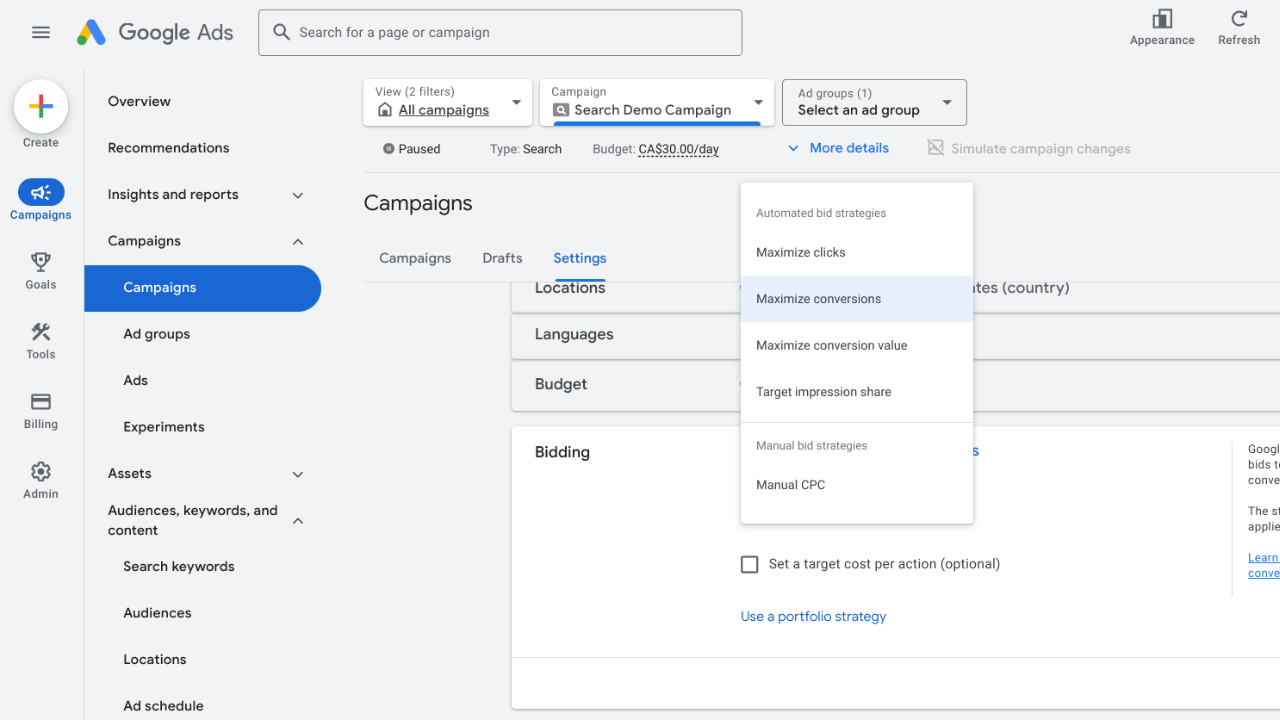
Smart Bidding feature comes with multiple options
2. Meta (Facebook & Instagram) Ads
Meta’s AI-driven advertising is built around advanced audience targeting, automated creative optimization, and predictive analytics. Key AI features include:
- Advantage+ Campaigns – Automates audience targeting, budget allocation, and ad placements to maximize performance.
- Lookalike Audiences – AI analyzes customer data to find new users with similar interests and behaviors.
- Automated Ad Creative – AI tests different ad formats and variations to identify the most engaging combinations.
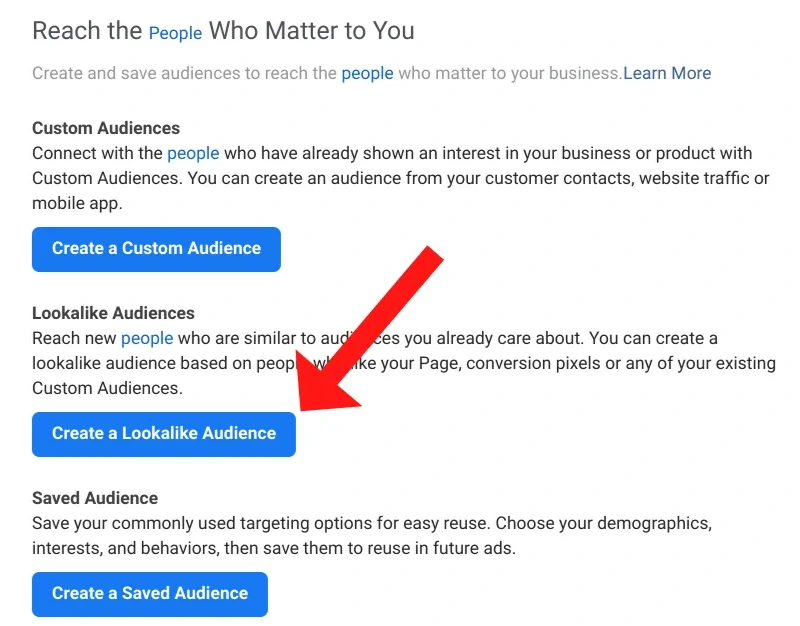
LookAlike Audience is one of Meta’s most coveted AI ad targeting features.
3. Amazon Ads
Amazon’s AI-driven advertising tools help brands optimize eCommerce ad placements for better conversions. Some of its most notable AI applications include:
- Amazon DSP (Demand-Side Platform) – Uses AI to automate display and video ad buying.
- AI-powered product recommendations – Advertisers can leverage AI-driven “Sponsored Products” and “Sponsored Brands” to reach high-intent shoppers.
- Predictive analytics for ad bidding – AI determines which keywords and placements will yield the highest ROI.
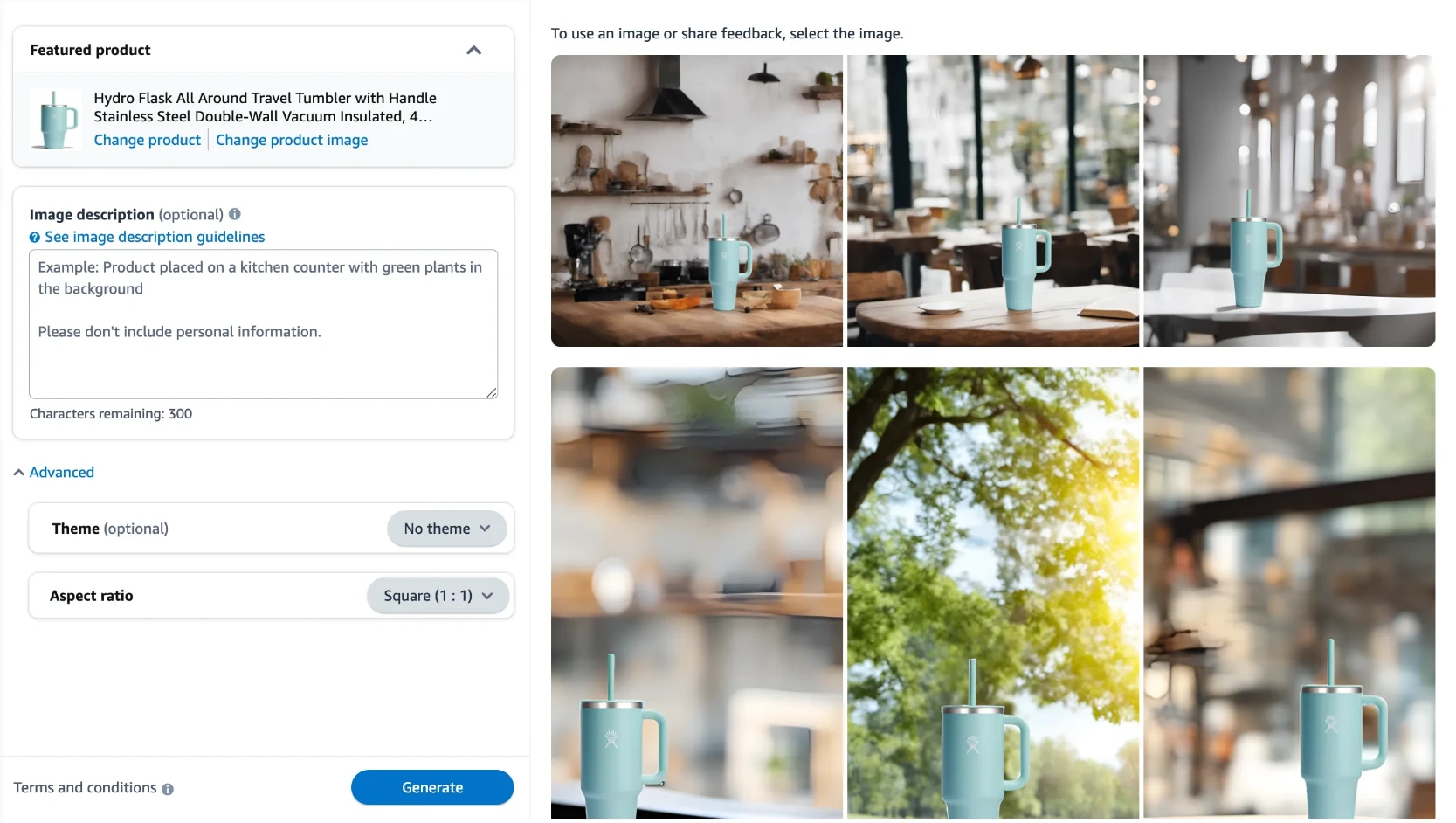
Amazon's AI-powered image generation feature for ads
4. LinkedIn Ads
LinkedIn Ads utilizes AI to refine professional audience targeting, expand reach, and improve engagement for B2B marketers.
- LinkedIn Audience Targeting – AI refines targeting based on professional job titles, industries, and engagement patterns.
- Predictive Audience Expansion – AI identifies and targets similar high-value professionals based on engagement and conversion data.

LinkedIn Ads use AI for targeting
5. Bing Ads
Microsoft’s Bing Ads uses AI to enhance targeting, bidding, and ad creation, helping advertisers maximize performance with minimal manual effort.
- Automated bidding and audience expansion – AI optimizes campaigns based on user intent and conversion likelihood.
- Compare & Decide Ads — AI dynamically generates curated, relevant answers in response to user queries, enhancing engagement, triggered by conversation inside CoPilot.
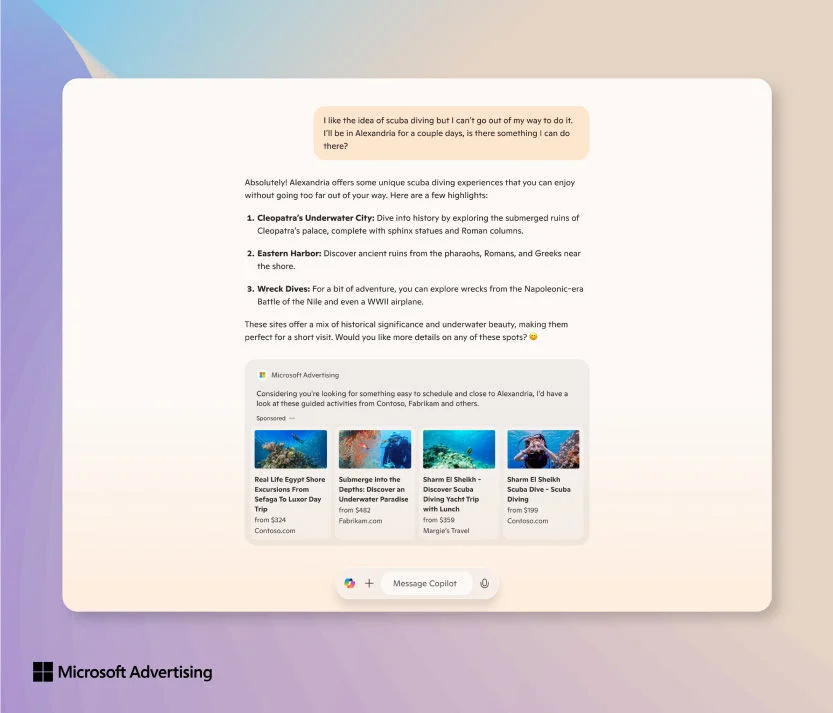
CoPilot Ads will be triggered considering the whole conversation within a single session.
6. TikTok Ads
TikTok has become one of the fastest-growing ad platforms, and its AI-driven recommendations play a big role in campaign performance. AI is used for:
- Interest-based targeting – AI identifies users based on their engagement with similar content.
- Smart Creatives – AI tests different combinations of creatives to maximize engagement.
- Smart Performance Campaigns – AI dynamically adjusts budgets and audience reach to improve conversion rates.

TikTok uses AI for Smart Creative ads
7. Other AI-powered ad platforms
- Reddit AI Ads – AI helps optimize ad placements within specific subreddit communities.
- X (formerly Twitter) AI Ads – AI-driven predictive engagement models help brands reach users most likely to interact.
- Pinterest AI Ads – AI enhances product discovery by placing ads in relevant search results.
- XHS Ads — AI optimizes ad targeting, personalizes content recommendations, and enhances user engagement through data-driven insights. Learn more about XHS marketing here.
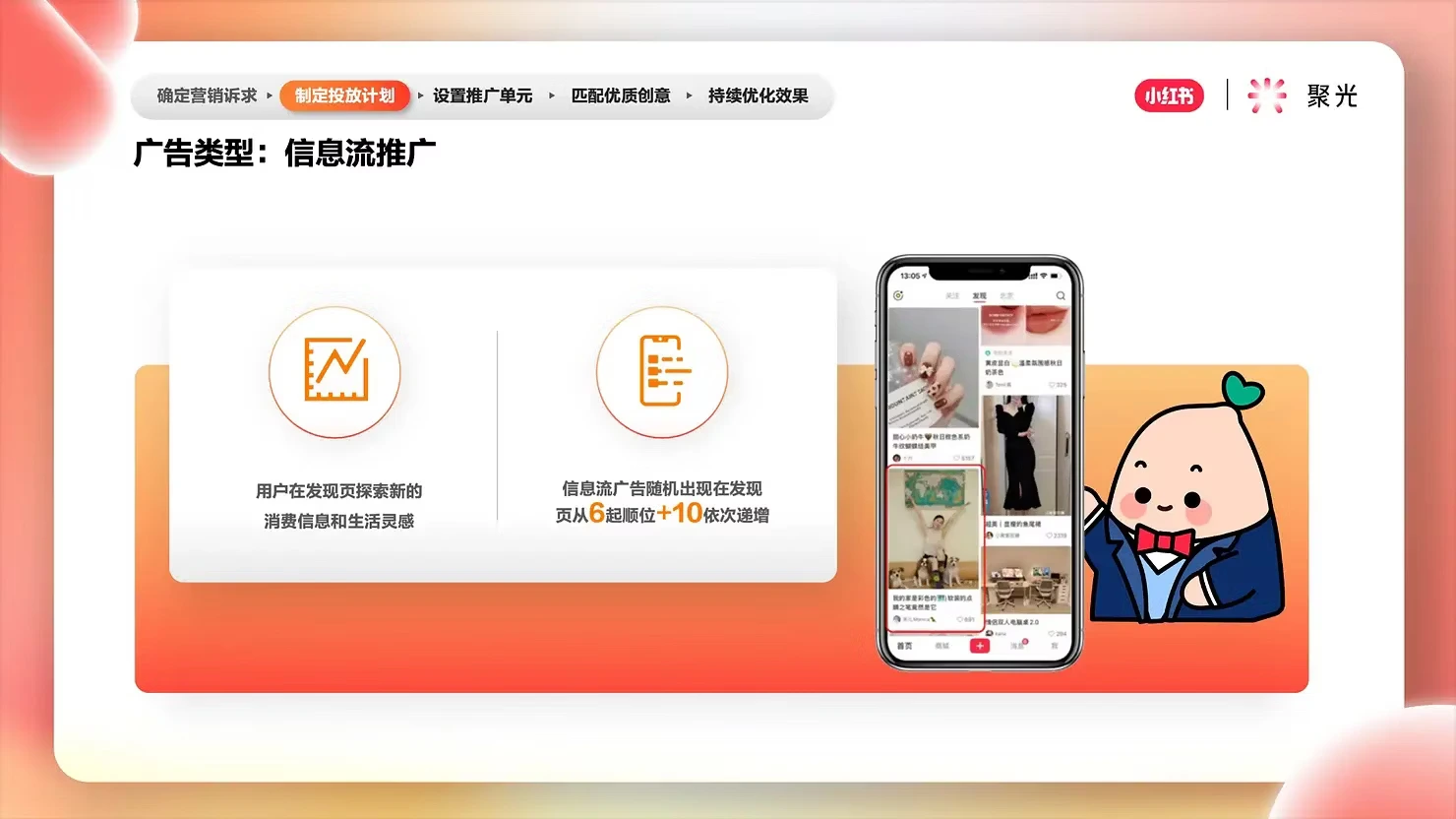
XHS's AI-powered in-feed ads
AI-powered advertising tools
AI isn’t just limited to advertising platforms. There are other third-party tools that help brands get even more out of AI-driven advertising. Let’s explore a few of those below:
AI ad creative and optimization tools
- ChatGPT, Jasper AI – AI-powered tools that generate ad copy and marketing content.
- Canva AI, Runway ML – AI-driven design tools that create ad visuals and social media content.
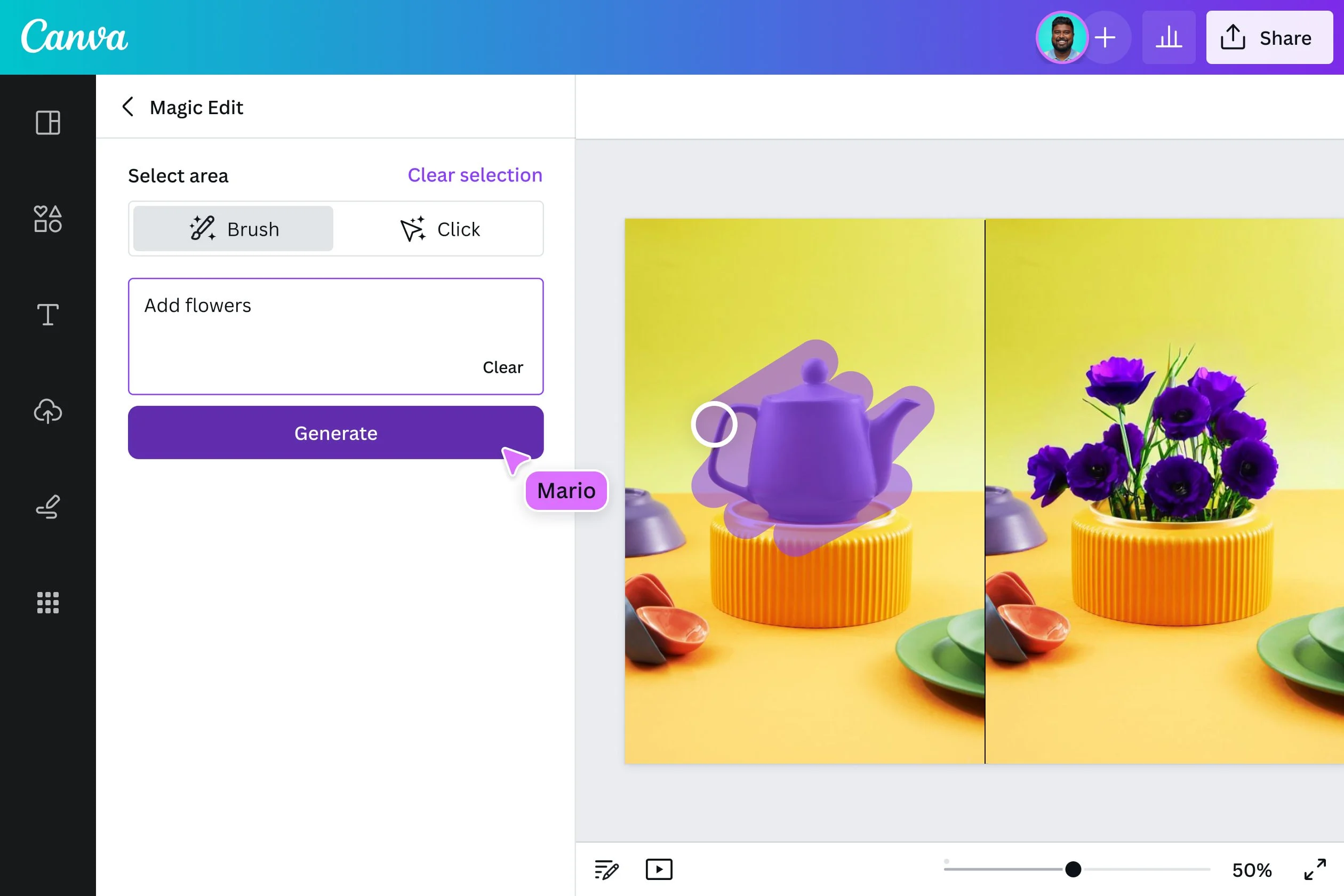
Canva's Magic Edit feature
AI ad intelligence and competitor analysis tools
SpyFu, SEMrush, Adbeat, Competitor Ad Intelligence Tool (COIN) – all these are AI-powered platforms that analyze competitor ads, uncover keyword strategies, and track ad spend trends.
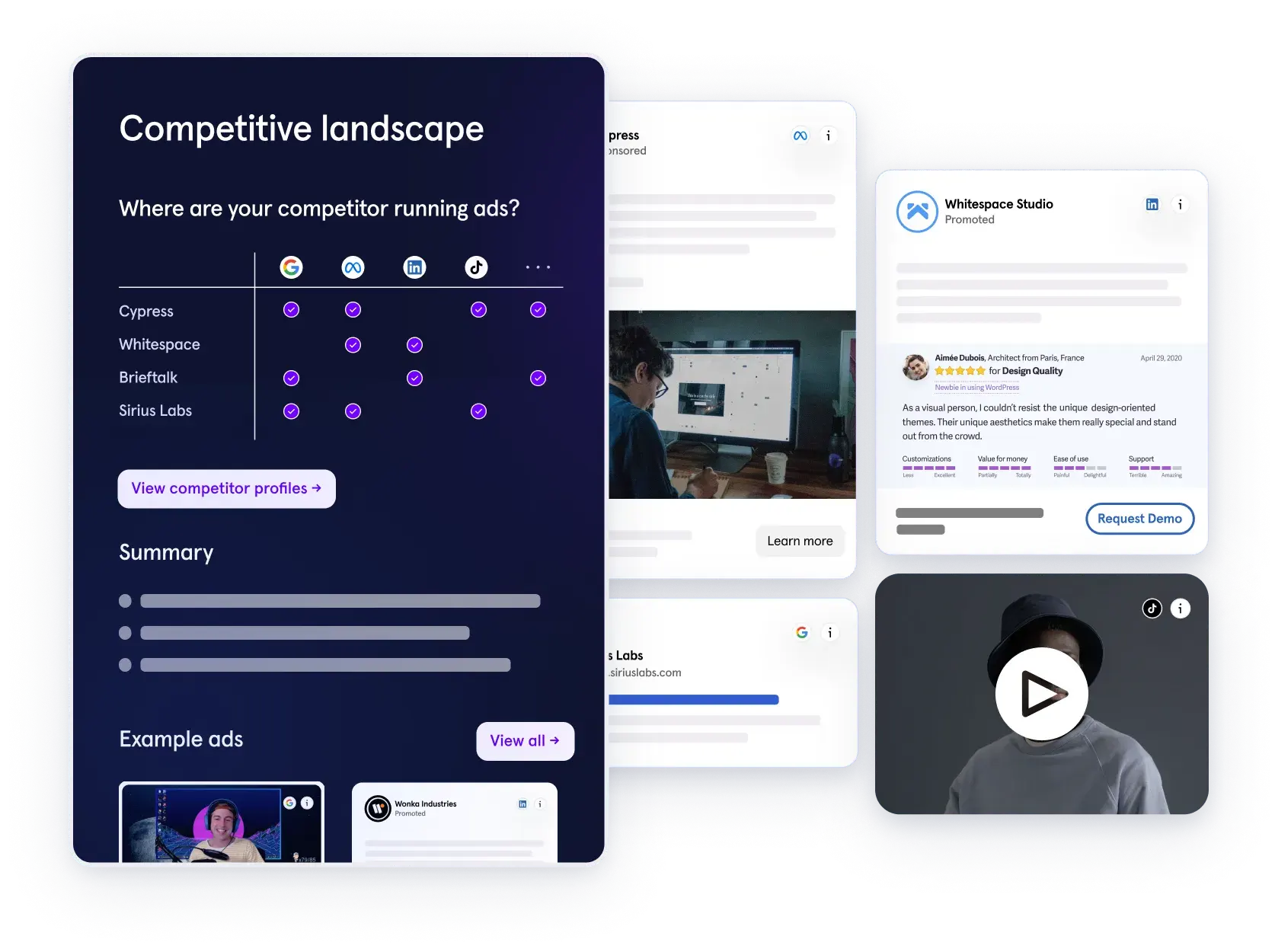
Competitor Ad Intelligence tool (COIN) by Kaya
AI in fraud detection and brand safety
- ClickCease & CHEQ – Uses AI to focus on click fraud prevention and invalid traffic filtering for paid ad campaigns.
- Fraudlogix – Focuses on programmatic ad fraud prevention, ensuring quality traffic for programmatic platforms.
AI-powered advertising platforms are making it easier for brands to scale their campaigns, but knowing which tools to use and when to rely on AI is crucial. In the next section, we’ll cover these in detail.
To learn more about how to use AI tools for paid marketing, check out this blog here.
How AI enhances advertising strategies
AI isn’t just making ads smarter—it’s changing how advertisers plan, test, and optimize campaigns. Whether you’re running search, social, or display ads, AI-driven strategies help improve performance while saving time. Let’s see how some of the most revered AI features work for advertising benefits and where you can find them.
Paid search advertising
| Feature | Description | Benefit | Platform/Tool |
|---|---|---|---|
| Smart Bidding | Adjusts bids automatically based on conversion probability, factoring in device, location, and browsing history. | Eliminates the need for manual bid adjustments, improves cost efficiency. |
|
| Dynamic Search Ads (DSA) | Scans website content and generates ad headlines automatically, reducing manual copywriting. | Saves time on ad copywriting and ensures ads align with website content. | Google Ads |
| Predictive keyword targeting | Suggests high-performing keywords based on search trends to validate keyword research. | Increases confidence in keyword selection and improves targeting accuracy. |
|
Social media advertising
| Feature | Description | Benefit | Platform/Tool |
|---|---|---|---|
| Automating audience segmentation | Groups users based on interests, behaviors, and purchase intent for better audience segmentation. | Ensures ads are shown to the most relevant users, increasing conversions. |
|
| AI-powered A/B testing | Tests different ad variations and determines which generates the most engagement. | Optimizes ad performance by identifying the most engaging creatives. |
|
| Personalized ad delivery | Tailors ad content based on user preferences to improve relevance and engagement. | Enhances personalization and improves click-through and conversion rates. |
|
Display & video advertising
| Feature | Description | Benefit | Platform/Tool |
|---|---|---|---|
| Automated video ads | Generates video content and captions dynamically based on product information. | Simplifies video ad creation, making it easier to scale video advertising. |
|
| Predictive ad placement | Predicts which websites and apps will generate the highest conversions for display ads. | Optimizes ad placements to maximize return on investment. |
|
| Contextual targeting | Places ads on pages with relevant content instead of relying on third-party cookies. | Maintains ad relevance without relying on tracking cookies. |
|
Influencer marketing
| Feature | Description | Benefit | Platform/Tool |
|---|---|---|---|
| AI-powered influencer discovery | Scans social media platforms to identify influencers that match brand values and audience preferences. | Helps brands find authentic influencers who align with their values. |
|
| Fraud detection | Detects fake followers and engagement manipulation in influencer marketing. | Prevents wasted budget on influencers with fake engagement. |
|
| Performance forecasting | Estimates the potential success of influencer marketing campaigns before partnerships are finalized. | Predicts which influencer collaborations will drive the best ROI. |
|
Voice search advertising
| Feature | Description | Benefit | Platform/Tool |
|---|---|---|---|
| Voice search intent recognition | Refines ad targeting based on the intent detected in voice search queries. | Improves targeting for voice-activated search ads. |
|
| Conversational ad experiences | Enables brands to engage users through interactive voice ads, creating conversational experiences. | Creates interactive and engaging ad experiences for voice users. |
|
Email & retargeting ads
| Feature | Description | Benefit | Platform/Tool |
|---|---|---|---|
| AI-generated personalized emails | Recommends subject lines and content based on past interactions to personalize email campaigns. | Increases email open and engagement rates through personalization. |
|
| Dynamic retargeting ads | Updates product recommendations in retargeting ads dynamically based on user behavior. | Boosts conversions by displaying the most relevant products in retargeting ads. |
|
Benefits of AI in advertising for businesses
AI in advertising isn’t just about automation like AI’s application in other fields. While it definitely extends its automation benefits, AI here is more about helping you make smarter, data-driven decision-making that helps with business’s improved efficiency, reduced waste, and better results.
For marketing clients investing in paid ads, AI offers several key advantages.
1. Improved ad targeting and personalization
One of AI’s biggest strengths is its ability to analyze massive amounts of user data to create highly targeted ads. Instead of relying on broad demographics, AI enables advertisers to:
- Identify specific audience segments based on browsing behavior, past purchases, and engagement patterns.
- Serve personalized ad creatives that dynamically adjust based on user interests.
- Deliver contextually relevant ads based on the content a user is consuming at the moment.
This level of targeting ensures that ads reach the right people at the right time, improving engagement and conversion rates.
2. Higher conversion rates through predictive analytics
AI helps businesses anticipate customer behavior by analyzing past interactions and predicting future actions. Predictive analytics allows advertisers to:
- Identify users who are most likely to convert and prioritize them in campaigns.
- Adjust bidding strategies in real-time based on conversion probability.
- Prevent wasted ad spend on users who are unlikely to take action.
Instead of spending months analyzing campaign performance manually, AI enables advertisers to optimize in real-time based on fresh data. Tools like Spyfu and Buffer use this technology.
3. Real-time campaign adjustments for better ROI
AI-driven advertising platforms automatically adjust bids, placements, and targeting settings based on live performance data. Here’s how it works
- If an ad is underperforming, AI will shift the budget to better-performing ads.
- If a specific audience responds better, AI will increase ad exposure to that segment.
- If a campaign is exceeding budget limits, AI will adjust bids to stay within cost-per-acquisition (CPA) targets.
This eliminates the trial-and-error approach of traditional campaign management, making AI a valuable tool for cost efficiency.
4. Reduced ad fatigue and creative optimization
AI-powered dynamic creative optimization (DCO), available in platforms like Meta, ensures users don’t see the same ad repeatedly, reducing ad fatigue. AI automatically:
- Rotates ad creatives to keep them fresh.
- Adjusts headlines, images, and CTAs to match user preferences.
- A/B tests different ad variations to find the most effective combination.
This leads to higher engagement rates and better ad performance over time.
5. More efficient ad spend and cost savings
AI reduces wasted ad spend by:
- Eliminating irrelevant impressions (ads shown to users who won’t convert).
- Adjusting bids dynamically to avoid overpaying for clicks.
- Detecting fraudulent clicks and bot traffic to prevent fake engagement.
For businesses working with limited ad budgets, AI ensures that every dollar is spent efficiently, maximizing return on ad spend (ROAS).
6. Automation saves time
Manually managing ad campaigns is time-consuming. AI helps automate tasks such as:
- Bid adjustments and budget allocation
- Audience segmentation and retargeting
- Ad creative testing and performance analysis
This allows advertisers to focus on strategy and creative messaging while AI handles optimization.
AI’s ability to improve efficiency, targeting, and performance makes it a powerful tool for advertisers, but it’s not without challenges. In the next section, we’ll cover the key things every paid marketing client aka business owners should know before using AI-driven advertising.
AI in advertising: what businesses must know
AI can make advertising more efficient, but to get the best results, marketing clients need to understand both its strengths and limitations. Here are the most important things to know before investing in AI-powered ads.
1. AI enhances strategy
AI is great at optimizing bids, automating targeting, and generating insights, but it can’t define your brand’s messaging or goals. That’s why:
- Your advertisers still need to set clear campaign objectives.
- AI works best when trained with high-quality data from past campaigns.
- Human oversight is required to ensure AI aligns with brand strategy.
AI enhances decision-making, but it shouldn’t replace human creativity and marketing expertise.
2. AI relies on data quality
The simpler way to say this is: garbage in, garbage out! But jokes aside, AI-driven ads perform well when they’re fed accurate, relevant data. If the data is outdated or incomplete, AI won’t be able to make the best decisions. This is why, you might want to pay attention to whether your advertiser is:
- Using clean first-party data (customer lists, purchase history, website engagement).
- Regularly updating audience segments to avoid AI optimizing based on old trends.
- Being cautious with automated audience expansion—AI sometimes includes irrelevant users.
You should help your advertiser with these data as much as possible for more refined results.
3. AI-driven ad targeting isn’t always perfect
AI predicts user intent based on past behavior, but it can make mistakes. It may misinterpret signals and target users who aren’t actually interested. Broad AI-driven campaigns (like Google’s Performance Max) sometimes spend budget inefficiently without proper exclusions. This is why, AI needs regular performance reviews to ensure it’s hitting the right audience.
4. AI personalization should be used carefully
AI-driven ad personalization can increase engagement, but over-personalization can feel invasive. As a consumer, you should make sure that you are avoiding hyper-specific personal data that could make ads seem creepy. Besides, be aware of data privacy laws (GDPR, CCPA)—misuse of AI in advertising can lead to legal issues. You can explore different levels of personalization to find the right balance with your paid marketer.
5. AI in ad bidding saves time but needs monitoring
AI-powered automated bidding (like Google Smart Bidding) helps optimize costs, but it’s not always the best option for every campaign. Here are a few things you could do, or ask your advertiser to do for you:
- Start with manual or enhanced CPC bidding before switching to AI bidding.
- Set bid caps to prevent AI from overspending.
- Monitor cost-per-acquisition (CPA) trends to make sure AI isn’t bidding too aggressively.
6. AI-generated ad creatives still need human review
AI can generate ad copy, headlines, and visuals, but human oversight is essential. It often produces generic or off-brand messaging that might not fit your brand guidelines. It’s a good practice to A/B test AI-generated creatives before scaling them.
7. AI fraud detection is necessary to protect ad budgets
AI is effective at detecting click fraud and invalid traffic, but businesses should take additional precautions. You can ask your advertiser (if they are not doing it already) to:
- Use third-party fraud detection tools (ClickCease, CHEQ) to prevent bot clicks.
- Monitor CTR vs. conversion rates—a high CTR with low conversions could signal fraudulent clicks.
- Set IP exclusions to block known fraudulent sources.
8. The cookieless future will make AI even more important
With third-party cookies disappearing, AI will be key to audience targeting. This is why, you should start collecting first-party data now to feed AI-driven campaigns. Feel free to use AI-powered contextual targeting as an alternative to cookie-based retargeting. You can also invest in predictive analytics tools (which we have already covered above) to stay ahead of data privacy changes.
AI is powerful, but it works best when paired with strategic thinking and human creativity. As both clients and marketers, we should remember that AI is a tool, not a decision-maker. The ultimate decision should be taken by us.
Now let’s explore some challenges of AI adoption in advertising.
Challenges and ethical concerns of AI in advertising
AI has made advertising smarter, faster, and more personalized, but it’s not without challenges. Here’s what marketing clients need to be aware of.
AI bias and fairness in ad targeting
AI learns from past data, but if that data contains biases, the AI will reinforce them. This has led to cases where ad algorithms unintentionally exclude or favor certain demographics, raising concerns about fairness. Industries like hiring, finance, and housing have already faced legal challenges over discriminatory AI-driven ads. To prevent this, marketers should regularly audit AI-driven campaigns, manually review targeting parameters, and adjust algorithms to ensure they remain inclusive.
Privacy concerns and data security
AI-driven advertising relies heavily on consumer data, making privacy a growing concern. With regulations like GDPR and CCPA, brands must be transparent about how they collect and use data. Consumers expect control over their information, and businesses that fail to comply with privacy laws risk losing customer trust and facing legal action. The shift toward first-party data collection is crucial, ensuring AI-driven ads are both effective and compliant with evolving data protection standards.
Transparency in AI-driven advertising
AI functions as a “black box,” making decisions that even advertisers don’t fully understand. Many performance marketers over-rely on AI without letting the businesses know about the extent of AI applications. This lack of transparency makes it difficult to troubleshoot issues or optimize campaigns effectively. As a client, you should demand clearer AI reporting from marketers and balance automation with human oversight to maintain strategic control.
Misinformation and AI-generated content risks
AI is increasingly used to generate ad copy, visuals, and videos, but it can also create misleading content. Deepfake-style endorsements, AI-generated testimonials, or exaggerated claims can blur the line between truth and deception. You must ask your marketers to carefully review AI-generated creatives and ensure their messaging remains accurate, ethical, and legally sound. Failing to do so can result in regulatory penalties and reputational damage.
AI in ad fraud and bot traffic
AI has made fraud detection more sophisticated, but fraudsters are also using AI to generate fake clicks, impressions, and engagement. Click farms and bot-driven interactions can manipulate ad algorithms, wasting budgets on fake traffic. Marketers should use AI-powered fraud detection tools, monitor performance data for anomalies, and regularly audit their campaigns to ensure ad spend is reaching real consumers.
The future of AI in advertising
The cookieless future and AI’s role
With third-party cookies being phased out, soon AI will rely on contextual targeting, first-party data, and predictive analytics to understand consumer intent. To combat this shift, start rethinking how to collect and use consumer data while maintaining personalization without violating privacy laws.
AI in augmented reality (AR) and virtual reality (VR) advertising
AI-powered AR and VR ads will provide immersive brand experiences, allowing users to virtually try on products, visualize furniture in their homes, or explore travel destinations. As the metaverse evolves, AI will personalize these digital experiences, offering hyper-targeted ads that blend seamlessly into virtual environments. Companies investing early in AI-driven AR and VR will gain a competitive edge. Real-estates have already started utilizing this.
AI’s role in omnichannel marketing
AI will synchronize campaigns across multiple platforms, ensuring a consistent brand experience whether a user engages via social media, search, email, or in-store. On the other hand, predictive analytics will enhance personalization, allowing AI to tailor messaging based on user behavior across different channels. This seamless integration should make advertising more efficient and customer-centric.
The ethical AI movement in advertising
As AI’s influence grows, regulations around transparency, fairness, and consumer privacy will tighten. Big companies have already started hiring marketing lawyers to ensure ethical AI practices, which states that ad targeting, automation, and personalization remain compliant and responsible. Brands that embrace transparency and data ethics will not only avoid regulatory issues but also build stronger trust with consumers in an AI-driven advertising landscape.
FAQ
How does AI improve ad targeting?
Can AI create ad content?
Does AI improve conversion rates?
Is AI advertising legal?
Final thoughts
From predictive analytics to real-time bidding and personalized ad delivery, AI has been reshaping how businesses and startups connect with consumers. But while AI can make advertising smarter, it doesn’t replace strategy, creativity, or expertise.
The truth is, that AI is only as good as the people managing it. Left unchecked, AI-driven campaigns can overspend, misfire on targeting, or even reinforce biases. It requires human oversight, ethical considerations, and continuous fine-tuning to ensure it’s working for your brand — not against it.
For businesses, the takeaway is clear: AI can supercharge your advertising, but only if it’s implemented correctly. Not every agency or freelance marketer has the expertise to do this right, and many in-house marketing teams don’t have the technical depth or AI-driven insights needed to optimize campaigns effectively.
If you want to make AI work for your brand without the hassle of month-long in-house training, you need a paid marketing agency that not only understands AI but actively uses it. You need a team that has proven expertise, real-world results, and complete transparency in how AI is integrated into your campaigns. Because when the right people handle AI, it acts like a growth engine that gives you a true competitive edge.
The question is, will you harness it the right way, or will you let the wrong hands steer your advertising off course? Choose wisely.
